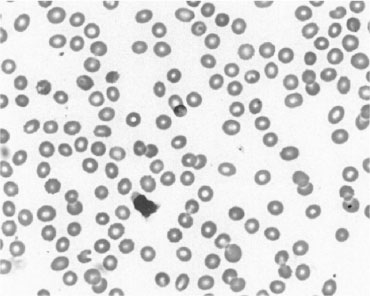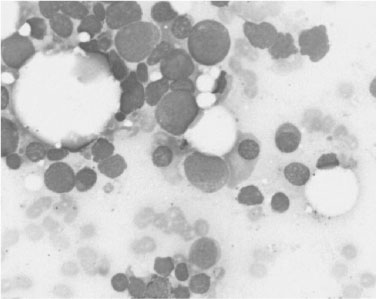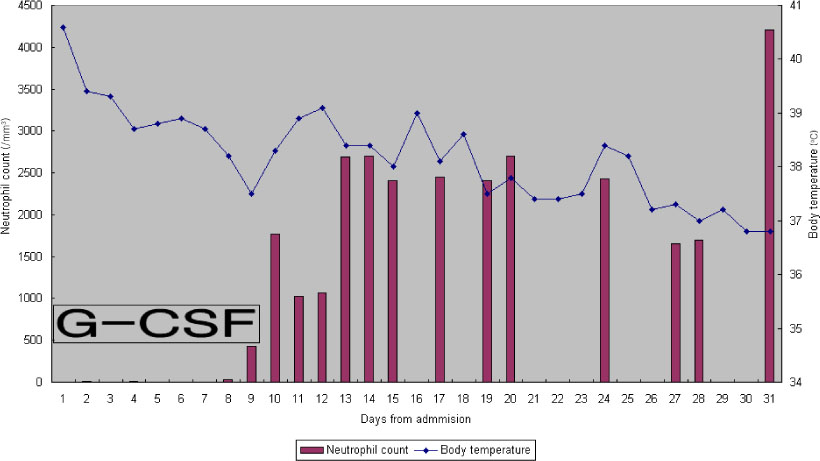J Korean Endocr Soc.
2006 Dec;21(6):548-551.
A Case of Methimazole-induced Pancytopenia: Successful Treatment with Recombinant Human Granulocyte Colony-stimulating Factor
- Affiliations
-
- 1Department of Internal Medicine, School of Medicine, Daegu Catholic University, Korea.
- 2Department of Laboratory Medicine, School of Medicine, Daegu Catholic University, Korea.
- 3Department of Pathology, School of Medicine, Daegu Catholic University, Korea.
Abstract
- Methimazole has remained the cornerstone for the treatment of hyperthyroidism since 1940's and it is a well-tolerated antithyroid drug. Pancytopenia is one of the major side effects of methimazole, but its occurrence is very rare. There have been some case reports about methimazole-induced pancytopenia that was treated with recombinant human granulocyte colony-stimulating factor (G-CSF), but its usefulness is still controversial. We present here a case of a 50-year-old female who had been treated with methimazole for hyperthyroidism and she subsequently presented pancytopenia. G-CSF was given for 10 days and she successfully recovered from the pancytopenia.
Keyword
MeSH Terms
Figure
Reference
-
1. Cooper DS. Antithyroid drugs. N Engl J Med. 2005. 352:905–917.3. Breier DV, Rendo P, Gonzalez J, Shilton G, Stivel M, Goldztein S. Massive plasmocytosis due to methimazole-induced bone marrow toxicity. Am J Hematol. 2001. 67:259–261.4. Biswas N, Ahn YH, Goldman JM, Schwarts JM. Aplastic anemia associated with antithyroid drugs. Am J Med Sci. 1991. 301:190–194.5. Douer D, Eisenstein Z. Methimazole-induced agranulocytosis: Growth inhibition of myeloid progenitor cells by the patient's serum. Eur J Haemat. 1988. 40:91–94.6. Moreb J, Shemesh O, Shilo S, Manor C, Hershko C. Transient methimazole-induced bone marrow aplasia: in vitro evidence for a humoral mechanism of bone marrow suppression. Acta Haematol. 1983. 69:127–131.7. Wall JR, Fang SL, Kuroki T, Ingbar SH, Braverman LE. In vitro immunoreactivity to propylthiouracil, methimazole, and carbimazole in patients with Graves' disease: A possible cause of antithyroid drug-induced agranulocytosis. J Clin Endocrinol Metab. 1984. 58:868–872.8. Mezquita P, Luna V, Munoz-Torres M, Torres-Vela E, Lopez-Rodriguez F, Callejas JL, Escobar-Jimenez F. Methimazole-induced aplastic anemia in third exposure: Successful treatment with recombinant human granulocyte colony-stimulating factor. Thyroid. 1998. 8:791–794.9. Hector F, Escobar M, Pilar B. Methimazole-induced severe aplastic anemia: Unsuccessful treatment with recombinant human granulocyte-monocyte colony-stimulating factor. Thyroid. 1997. 7:67–70.10. Tajiri J, Noguchi S, Okamura S, Morita M, Tamaru M, Murakami N, Niho Y. Granulocyte colony-stimulating factor treatment of antithyroid drug-induced granulocytopenia. Arch Intern Med. 1993. 153:509–514.11. Fukada S, Kuma K, Sugawara M. Granulocyte colony-stimulating factor does not improve recovery from antithyroid drug-induced agranulocytosis. Thyroid. 1999. 9:29–31.12. Kang SG, Bae JO, Lee EY, Lim SM, Cho SK, Kim JH, Song SK. A case of methimazole-induced cholestatic jaundice with agranulocytosis. J Kor Soc Endocrinol. 2005. 20:519–523.13. Choi SY, Song MK, Park DB, Chung YS, Lee KW, Kim HM, Kim HS, Jeon HS. A case of methimazole-induced agranulocytosis treated with granulocyte colony stimulating factor. J Kor Soc Endocrinol. 1997. 12:68–74.14. Yamamoto A, Katayama Y, Tomiyama K, Hosoai H, Hirata F, Kimura F, Fujita K, Yasuda H. Methimazole-induced aplastic anemia caused by hypocellular bone marrow with plasmacytosis. Thyroid. 2004. 14:231–235.
- Full Text Links
- Actions
-
Cited
- CITED
-
- Close
- Share
- Similar articles
-
- A Case of Antithyroid Drug-Induced Agranulocytosis Treated with Granulocyte Colony-Stimulating Factor (G-CSF) and Methylprednisolone
- Two cases of congenital agranulocytosis treated with recombinant human granulocyte colony-stimulating factor
- Sweet Syndrome in a Child with Aplastic Anemia after Receiving Recombinant Granulocyte Colony-stimulating Factor
- The effect of granulocyte colony-stimulating factor in chemotherapy of acute myelogenous leukemia
- Preliminary study of antithymocyte or antilymphocyte globulin, cyclosporine-A and recombinant human granulocyte macrophage colony stimulating factors for patients with aplastic anemia




